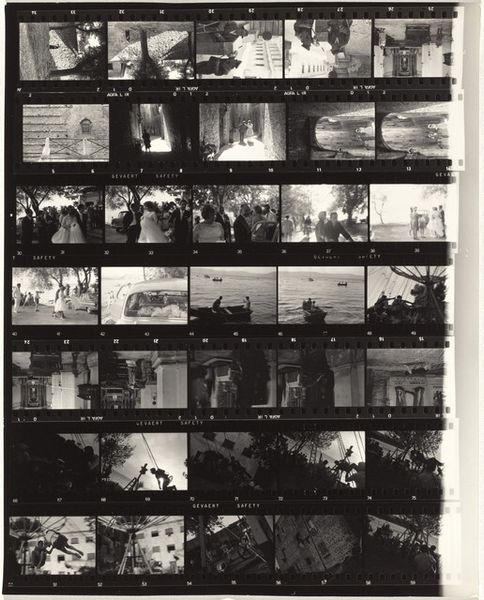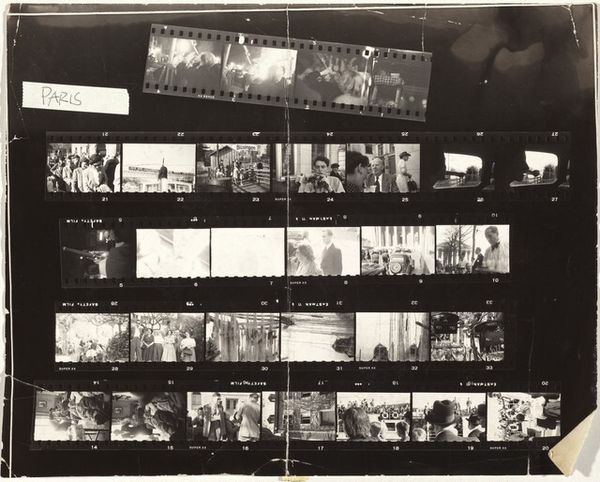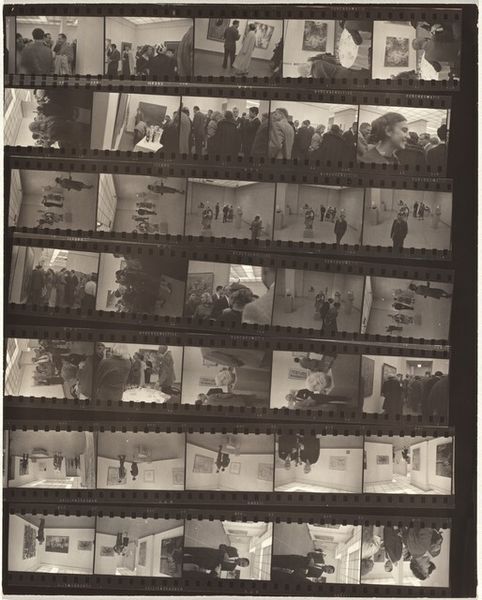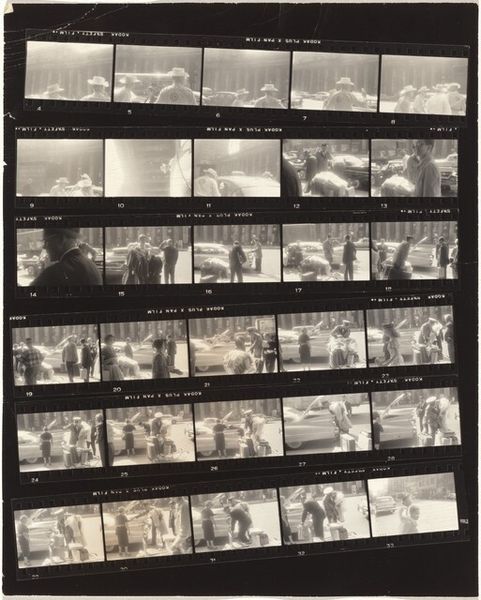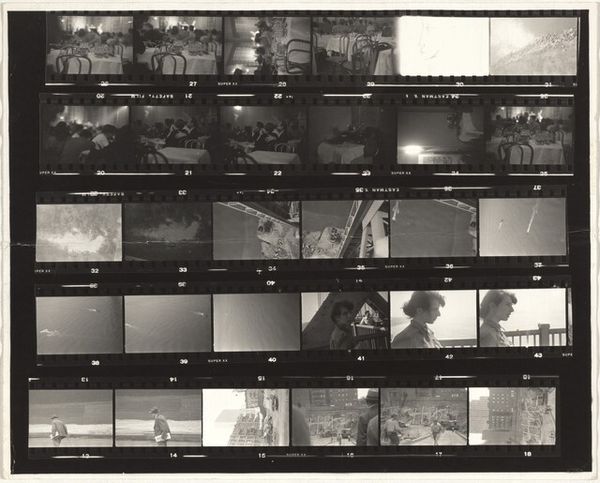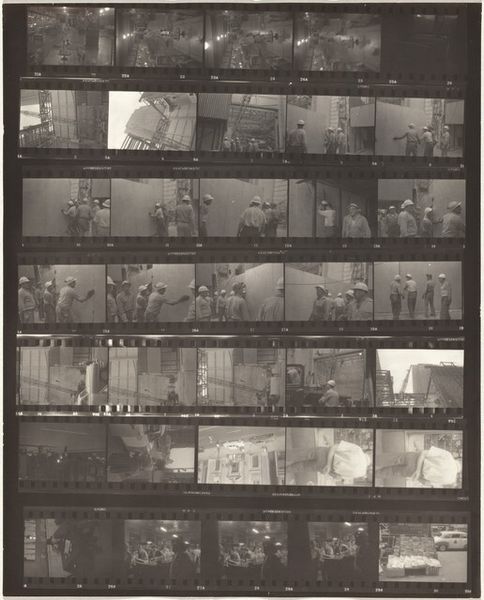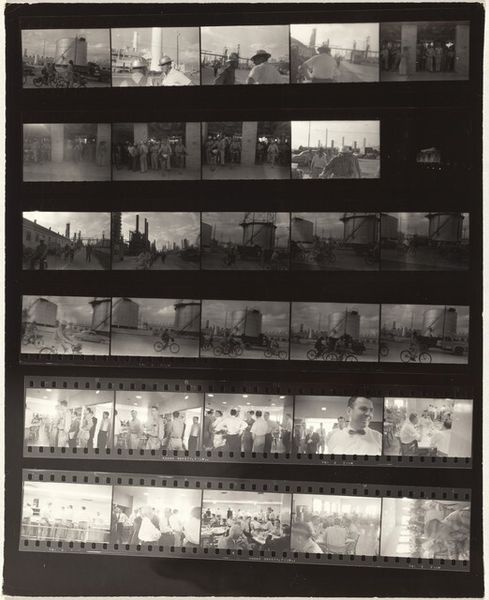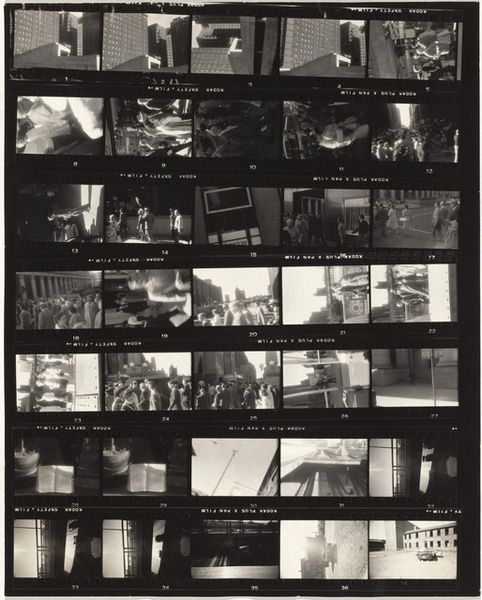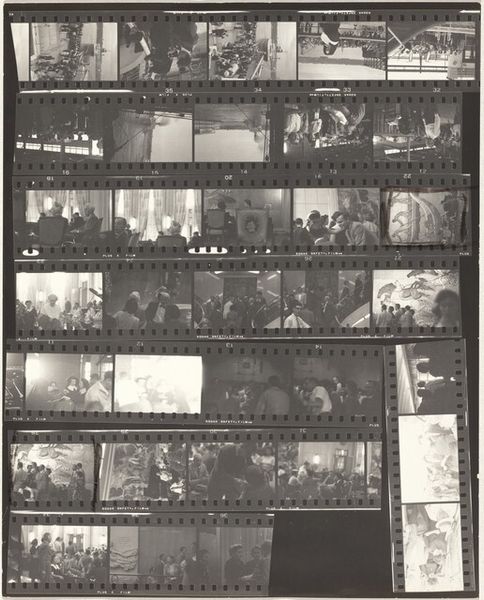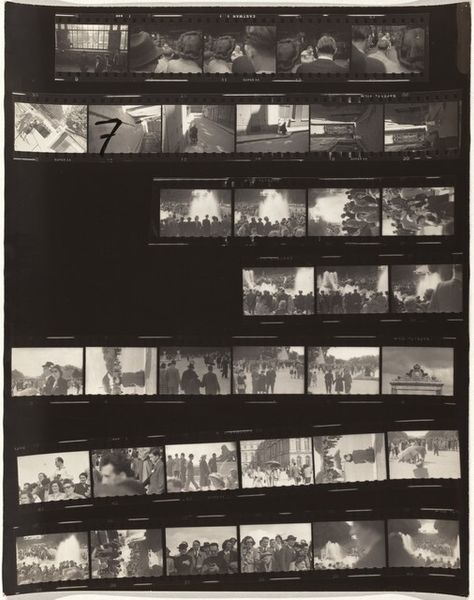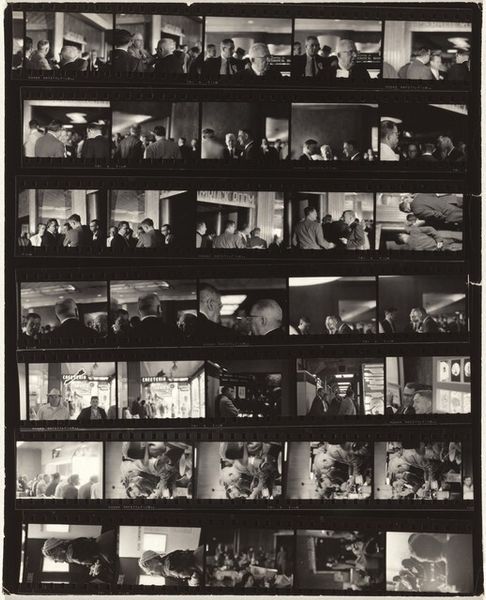
contact-print, photography, gelatin-silver-print
#
film photography
#
contact-print
#
archive photography
#
street-photography
#
photography
#
gelatin-silver-print
#
monochrome photography
#
ashcan-school
#
monochrome
Dimensions: sheet: 25.2 x 20.2 cm (9 15/16 x 7 15/16 in.)
Copyright: National Gallery of Art: CC0 1.0
Curator: Welcome. We are now observing Robert Frank's contact-print titled "Museum of Natural History 2", made circa 1960. It's a gelatin-silver print displaying a full roll of film. Art Historian: My first impression is a somber one. The stark black and white, the gridded format, and the somewhat blurry figures evoke a sense of detachment and almost clinical observation. Curator: Precisely. Frank's decision to present the entire roll as a contact sheet forces us to consider the photographic process itself. Note the contrast and tonality across each frame, reflecting a distinct atmosphere in each scene. Art Historian: But also consider the 'Museum of Natural History' theme. These are staged, curated environments of natural artifacts, and these images document viewers interacting with those representations. I see themes of mediation and observation... what is "nature" through the lens? Curator: An excellent point! We can analyze this in relation to Ashcan School aesthetics too. Notice Frank's departure from purely aesthetic concerns as a conscious choice—his focus on realism, even if unrefined, challenges traditional compositions. The visual rhythm arises from the repetitions across each frame. Art Historian: True. The figures themselves, often blurred or faceless, become almost symbolic of modern alienation within institutional spaces. They observe dead nature... become alienated. Curator: Also note that, even presented raw on the contact sheet, compositional choices persist within each shot—a triangulation here, an emphasis on negative space there, revealing photographic intelligence. Art Historian: Definitely, this photograph acts like an archive and an artifact simultaneously, echoing what’s presented inside the Museum: reality mediated through curation and perspective, a lens through a lens, layers upon layers. Curator: The conceptual strength lies, ultimately, in the format itself, creating visual structure, an unconventional narrative from start to finish, and revealing the artifice and artistry implicit in documentary. Art Historian: Agreed, what appears raw is inherently curated, a statement on human construction, a narrative both beautiful and disturbing. Curator: Indeed, there’s a powerful statement on photography here, forcing reflection on art and perception within spaces of study. Art Historian: A very powerful convergence of process and symbolic charge.
Comments
No comments
Be the first to comment and join the conversation on the ultimate creative platform.
